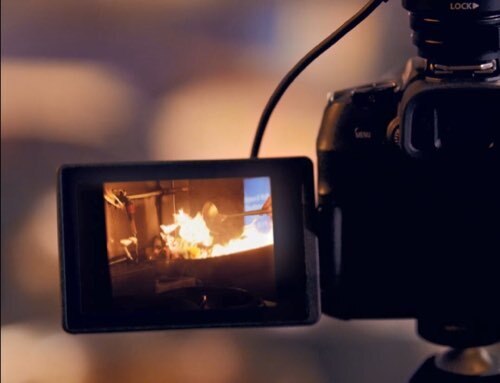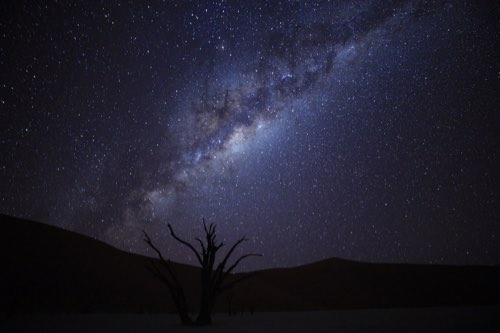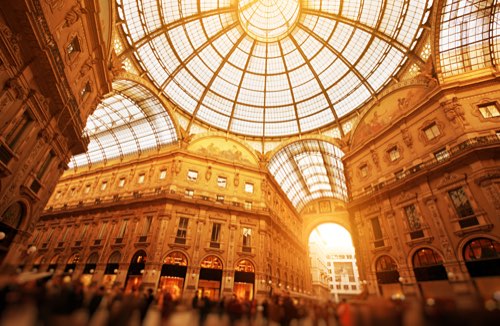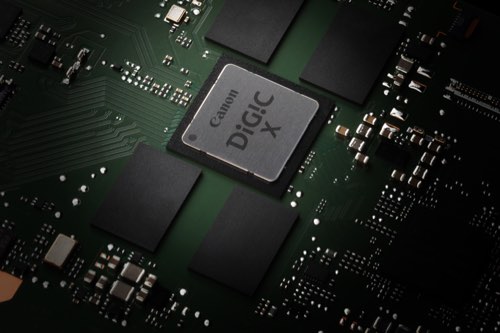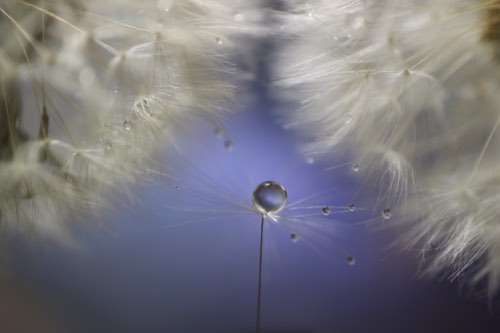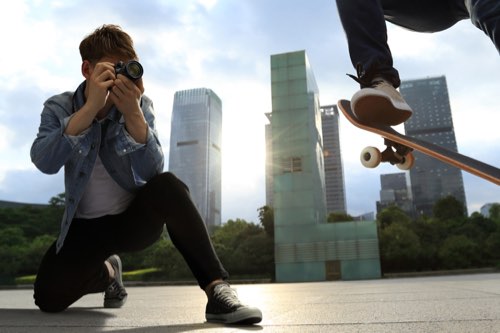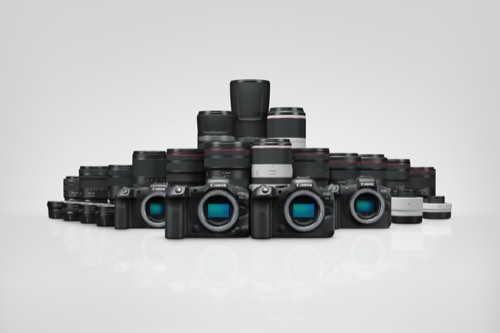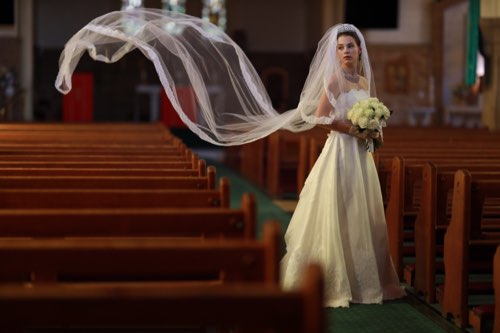You’ve decided to make a huge step in your photography journey—getting your first dedicated camera. With so many options, each with their own unique features, how do you choose the one that works best for you? Here, we share seven things to consider (other than budget) that will help you make a better decision.

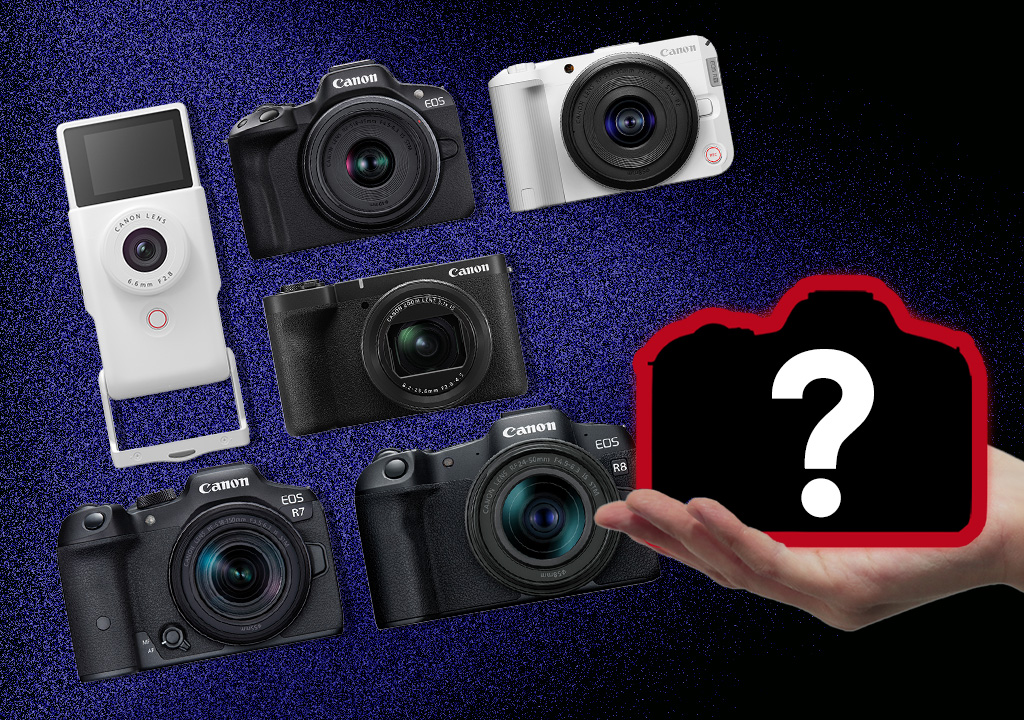
1. Do I want the possibility of using different lenses?
1. Do I want the possibility of using different lenses?
Compact camera or interchangeable lens camera?
Mirrorless and DSLR cameras are interchangeable lens cameras, and they are what you will want to get if one of your main reasons for getting a dedicated camera is the ability to play with a variety of lenses. (Learn more about the different things that different lenses can do in Lenses 101).

Shot on the RF100mm f/2.8L IS USM
A long macro lens like the RF100mm f/2.8L IS USM lets you capture close-ups of small, sensitive subjects like butterflies from a comfortable distance away.
The kit lens that comes with your DSLR/mirrorless camera kit is usually a standard zoom or superzoom lens that covers most everyday subjects. However, if you prefer less maintenance or simply like the idea of doing everything with just one unit, consider getting a compact camera. The ones in Canon’s PowerShot series have at least a 1-inch image sensor, which is bigger than what you would find on most smartphone cameras. Most also have features you would find on mirrorless and DSLR cameras such as:
- Fast autofocus and tracking
- High continuous shooting speed
- Manual and semi-automatic exposure modes
- High ISO performance
- Wi-Fi and Bluetooth connectivity

Canon’s flagship PowerShot V1 premium compact camera features a relatively large 1.4-inch image sensor. It also has many powerful features also found on Canon EOS R series mirrorless cameras such as a powerful deep learning-based autofocus system and Canon Log 3 recording.
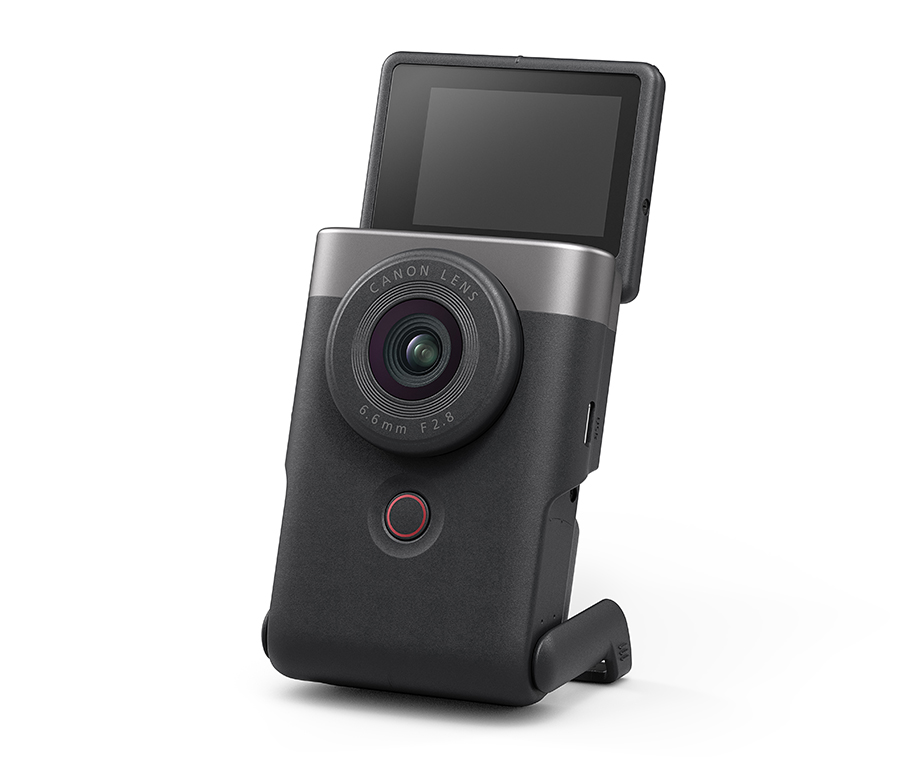
Beginners looking for a dedicated vlogging camera can consider the unique, ultra-portable PowerShot V10. It has an integrated kickstand that reduces the need for a tripod, a large omnidirectional microphone for clear audio, and a wide-angle f/2.8 lens tailored for selfie videos.
Know this: the tradeoffs involved
If the following matter to you, it might be better to choose a mirrorless or DSLR camera:
Image quality
Compact camera zoom lenses need to be small, which limits lens design. Good interchangeable lenses have special glass and other design features tailored to provide the best image quality.
Shallow depth of field and bokeh
The combination of lens design limitations and a smaller image sensor means that under the same settings and shooting conditions, the bokeh created by a compact camera will probably not look as creamy.

EOS R6 + RF85mm f/2 Macro IS STM
The buttery smooth foreground and background bokeh were achieved at f/2 using a full-frame mirrorless camera on a large aperture prime lens.
Room for growth
Learning how to use different kinds of lenses not only broadens expressive possibilities, it is also an enriching photography skill. You might not see the merits of them now, but what if you change your mind? With a DSLR or mirrorless camera, you will always have the option to stick to the kit lenses now and get a newer, better lens when you are ready. But with the compact camera, you will have to make do with what you have.
If you are quite sure you want a compact camera, skip to point 4.
Also see:
EOS R50 V vs. PowerShot V1: How are They Different?
2. Do I want an APS-C camera or a full-frame camera?
2. Do I want an APS-C camera or a full-frame camera?
Budget, size, and shooting flexibility
If you have decided on an interchangeable lens camera, your next decision will probably be whether to go for an APS-C or full-frame image sensor.

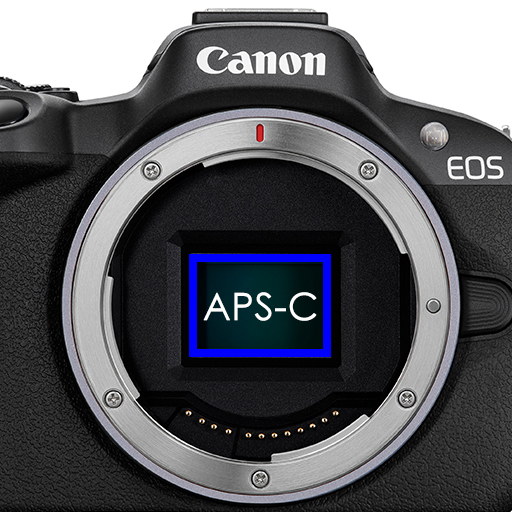
Exploring this topic requires a whole article—you can read more about it in Full-Frame vs APS-C Camera: Which Should I Choose?. Generally, image sensor size affects the size of the camera and the cost of producing it, so if you need a smaller camera or are on a very tight budget, you will find more choices among APS-C camera models. But if you want to invest in a camera that offers the most possibilities in the long-term, consider a full-frame camera.
3. Which lens mount should I go for?
3. Which lens mount should I go for?
Important if you intend to eventually upgrade your gear
Closely related to your choice of APS-C or full-frame camera is your choice of camera series/lens mount. Canon currently has four different lens mount systems:
- RF mount for the EOS R mirrorless system
- EF mount for full-frame DSLRs
- EF-S mount for APS-C DSLRs
- EF-M mount for the EOS M APS-C mirrorless camera system
There are two types of RF mount lenses:
- RF lenses designed for full-frame EOS R cameras
- RF-S lenses designed for APS-C EOS R cameras
Both types can be directly attached to any EOS R camera, but the outcome may be different depending on the image sensor.
The chart below shows the cross-compatibility between the different types of lenses and camera bodies:

1 Needs mount adapter
2 Field of view will be narrower than on a full-frame camera
3 Only part of the image sensor will be used to record the image
The lens mount affects the lens choices available to you, and it has implications especially if you plan to upgrade your gear or expand your arsenal in the future. For example, the EF mount lineup is mature with a wide range of existing lenses, but Canon is currently focusing on the new RF mount which has unlocked a lot of possibilities.
Also see:
RF Lenses vs EF Lenses: What's the Difference and How to Decide?
What’s the Difference Between RF-S and RF Lenses?
4. Is having a viewfinder important?
4. Is having a viewfinder important?
It’s a matter of preference and shooting style, but having one is helpful!
As you explore your options, you might wonder if you will regret choosing a camera that doesn’t have a viewfinder. It boils down to individual preference, but a viewfinder certainly has its benefits.

Some mirrorless cameras like the video-centric EOS R50 V (pictured here with the RF-S14-30mm f/4-6.3 IS STM PZ kit lens) don’t have a built-in viewfinder.
When it helps to have a viewfinder
- For shooting outdoors in bright daylight, when it becomes hard to see the rear LCD screen
- To concentrate better on subjects
- For holding the camera in a more stable stance
- When shooting in low light, so that light from the LCD screen doesn’t distract other people nearby
How is an EVF different from a DSLR’s optical viewfinder?
The optical viewfinder (OVF) on DSLRs shows the image direct from the lens reflected in the mirror. Meanwhile, the display on an EVF has gone through the image processor just like the Live View display on the LCD screen. This makes it possible to display more information and preview the effects of your exposure, white balance, or colour settings.

Having problems seeing the rear LCD display due to glare from the sun? Viewfinder to the rescue! The information overlay on an EVF is basically the same as the one on the rear LCD screen, which makes it easy to see the effects of different settings. If you enable Touch & Drag AF on your mirrorless camera, you would also be able to control the AF point intuitively without taking your eye off the viewfinder by tapping or dragging your finger across the LCD touchscreen.
Benefits of an EVF
- Can preview exposure and colour settings
- Information display
- Viewfinder gain can help you see better in the dark
- Functions such as zooming in on image to check focus
- Doesn’t need a mirror; helps to keep camera small
Also see:
Can A Fast Lens Really Make It Easier To See Through The Viewfinder?
5. Does it have the interfaces and controls that I need?
5. Does it have the interfaces and controls that I need?
Check for things like a built-in flash, hot shoe, etc.
Different cameras are designed with different users in mind, so not every camera may have the features you need. Here are some examples of some of them:
Hot shoe/Multi-function shoe

A camera with a hot shoe allows you to attach external accessories such as Speedlites, which are good to learn how to use if you want to improve your portraiture skills or grow as a photographer.
Most Canon cameras released since 2021 have a multi-function shoe. This has an extra digital terminal under the silver panel that can be used to supply power to compatible accessories such the Multi-Function Shoe Direction Stereo Microphone DM-E1D.
Built-in flash

A built-in flash is convenient for situations where you need extra lighting. However, higher-end cameras often don’t have one as the advanced photographers they are designed for usually prefer using Speedlites. Having a built-in flash also makes it harder to achieve the level of dust- and drip-resistant weather sealing required for professional use.
Also see:
In Focus: Built-in Flash Techniques
Simplicity or more direct controls?
All recent camera models feature a touchscreen, which makes navigating menus and controlling things like autofocus more convenient than before. Camera models designed for more advanced users usually have more dials and buttons that help you change settings more quickly in dynamic scenes.
The images below show the top right and back panel controls of the EOS R50, an entry level APS-C camera, and the EOS R7, Canon’s top of the line APS-C camera model.
Recent advanced camera models like the EOS R3 and EOS R5 Mark II have cutting-edge features like Eye Control AF, which lets users control the focusing point with their eye movement.

(Not shown to scale)

(Not shown to scale)
Video-first camera?

Canon’s latest cameras have excellent video functions, but those in the PowerShot V and EOS V series have extra video-centric ergonomics. The EOS R50 V has a unique video-centric mode dial, an extra tripod socket for vertical mounting, and shortcut buttons for livestreaming and changing colour modes.
6. What do I plan to shoot?
Certain features are designed to cater to certain scenarios
The features that are important for action photography would be different from those for landscape photography. Here are some common photography genres and the features that would matter most.
Wildlife, action, and unpredictable subjects

EOS R5 Mark II + RF600mm f/4L IS USM
If you are buying a camera to photograph unpredictable subjects like birds in flight, pets, or sports, it helps to have a camera that responds and focuses quickly and accurately. Good autofocusing (AF) capabilities are especially helpful when you are using long, telephoto lenses since these intrinsically have a shallower depth of field that can make focus challenging. A fast continuous shooting speed is a bonus.
Did you know: Mirrorless cameras have better AF coverage than DSLRs
On DSLR cameras during viewfinder shooting, AF is conducted by a dedicated AF sensor. Meanwhile, on a Canon mirrorless camera, AF is conducted using the pixels on the image sensor under the Dual Pixel CMOS AF system. The latter achieves denser, wider AF coverage, which contributes to faster, more precise AF.
DSLR

*Image is for illustration only
The image above shows 45 AF points, typical of a mid-range DSLR. Entry-level DSLRs have fewer points while higher-end DSLRs have more.
EOS R series mirrorless camera

*Image is for illustration only
Nearly all EOS R-series mirrorless cameras can autodetect and focus on a subject over 100% of the image area, with denser AF zone coverage for better accuracy. They also have more selectable AF positions for users who like having more precise control over AF points.
For example, even the entry-level EOS R50 has up to 651 AF zones and up to 4503 selectable AF positions. On more advanced models like the EOS R5 Mark II, this goes up to 1053 zones and 5850 selectable positions.
Also see:
Canon Technology Explainer: What is Dual Pixel CMOS AF?
Is Composition Easier on a Mirrorless Camera?
EOS R7 or Advanced APS-C DSLR? (Part 2): Core Capabilities
Other features to consider:
- Autofocus system and interface: Cameras with the Dual Pixel CMOS AF II and Dual Pixel Intelligent AF systems use deep learning technology for better subject detection and tracking performance. Camera models released in late 2021 or later (except for the EOS R100) have a more intuitive, flexible AF interface inherited from the EOS R3.
- Subject detection modes: For example, if you shoot motorsports, vehicle detection is useful to have; if you plan on shooting events and concerts, you’d benefit from Register People Priority.
- Fast continuous shooting speed: The more frames (consecutive shots) the camera can take per second, the higher your chances of getting a picture-perfect moment. Make sure that subject tracking during continuous shooting is supported.
- Direct controls and customisable functions: Helps you to change settings quickly.

EOS R10 + RF-S18-150mm f/3.5-6.3 IS STM @ 70mm (112mm equivalent), f/6.3, 1/2000 sec, ISO 400
Canon's recent cameras like the EOS R7 and EOS R10 have advanced deep learning-based subject detection and tracking capabilities which enable swifter, more reliable focusing, even on subjects that move quickly in unpredictable directions.
Low light/night photography

EOS R6 Mark II + RF14-35mm f/4L IS USM @ f/11, 1/25 sec, ISO 51200
If you’re planning to shoot a lot in low light, you’ll want a camera that allows more flexibility even at night. Look for:
- High ISO speed performance: How high can you set the ISO speed before the image gets grainy from image noise?
- A lower low light AF limit: For easier focusing even under darker conditions
- In-Body Image Stabilization (In-Body IS): For enhanced image stabilisation when shooting handheld.
Generally, a full-frame camera with fewer image pixels enables cleaner images at high ISO speeds because the individual pixels and therefore, the light-gathering area will be larger. But other technologies such as image sensor structure and noise reduction algorithms can also help.
Know this: How much “unacceptable” is also depends on preference
For example, a photographer who shoots fast action may prioritise capturing the moment, and so have a higher threshold for grain compared to a portrait photographer who needs the subject’s skin to look pristine. If it really matters to you, look for sample images from the camera shot at a high ISO speed.
For an example of how technological advancements can improve high ISO speed performance, see:
[Hands-on Review] EOS R6 in Dance Concert Photography
Landscapes

EOS R8 + RF14-35mm f/4L IS USM
High ISO performance and fast AF performance don’t matter as much for landscape photography. Instead, landscape photographers usually look for:
- More dynamic range: To capture a greater range of tones in high contrast scenes such as sunrise and sunset.
- More megapixels: Helps to capture more detail, and if you want to make large prints/
- Good weather sealing: If you frequently shoot outdoors, a camera that is built to prevent dust and water droplets from entering can endure the elements better. Note that such cameras are usually higher-end cameras.
Other features to consider:
- In-Body IS and a Vari-angle LCD monitor: Helps with handheld shooting from unique angles.
- Full-frame sensor: To take advantage of ultra-wide-angle lenses like the RF10-20mm f/4L IS USM and RF15-35mm f/2.8L IS USM, achieving even more breathtaking perspectives.
- Focus bracketing: Easier focus stacking to achieve images of deep scenes that are in focus from the front to back. Some cameras have in-camera Depth Compositing, which automatically stacks the focus bracketed images so that you can see the results on the spot.
- Support for HDR PQ HEIF recording: For greater dynamic range even without post-processing.
Also see:
Getting Started in Landscape Photography: 5 Things to Know
Why the EOS R5 is My Ideal Camera for Landscape Photography
Portraiture

EOS R6 Mark II + RF50mm f/1.2L USM
Getting the eyes in focus is critical for portrait photography. All recent cameras offer Eye Detection AF, which detects the portrait subject’s eyes and ensures that it’s in focus. To ensure the best shots even for subjects who move a lot, such as children, check that the camera supports Eye Detection AF even in Servo AF mode (some older cameras might not). The latest cameras even allow you to set either the left or right eye for prioritisation.
A fast continuous shooting speed would also help.
Tip: Vari-angle LCD screen + Eye Detection AF = powerful portrait photography combination
It can be harder to build a connection with your portrait subjects if your face is hidden by the camera. A tilting/ Vari-angle LCD monitor, Eye Detection AF and excellent subject tracking make it easier to get great in-focus shots even as you interact with your subject!
Other genres:
- Macro photography often requires high precision focusing, so you will probably want to make fine adjustments manually. Look out for features that aid manual focusing, such as MF peaking and the Focus Guide.
- For street photography, besides the speed and responsiveness to capture moments, it helps to have something inconspicuous. Look for a small camera with an electronic shutter mode that allows you to shoot silently while controlling exposure settings.
A daily life photographer who is particular about the camera she picks shares why the EOS RP works for her in:
Why I’m Glad I Bought the EOS RP
7. Do the size and ergonomics work for me?
7. Do the size and ergonomics work for me?
How you like the camera to feel depends on you
Does the delight of using the most advanced camera you can afford outweigh the cons of a heftier body, or do you feel exhausted at the thought of carrying an extra bag? Are you the sort who likes the feel of robust gear in your hands, or is your philosophy more “less is more”? If it’s your first camera, you might not even be sure of what you’ll like!
It’s good to get a feel of the camera before deciding. Rent it if you can; take advantage of test drive events if there are any in your area. A camera is a huge investment—you’ll want something you enjoy using!

Clockwise from top left: PowerShot V1, EOS R50, EOS R7, EOS R3. Budget aside, these cameras of different sizes and form factors would appeal to very different users.
Also see: Rediscovering the Joy of Wildlife Photography with the EOS R50
Getting a good grip



Also pay attention to the grip—the protruding part on the right side of the camera where your fingers rest. If you have larger hands, you might find that a deeper grip allows a more secure hold on the camera, Pictured above are the grips on (from left to right) PowerShot V1, EOS R10, EOS R7.
---
As you can see, there is no one “best camera” that caters to everyone. We hope that the above will help you narrow down the features that are the most important to your needs and shooting style, and make it easier to find something that works best for you. All the best for your photography journey!
Have some cameras in mind already? These comparison articles might help you decide better:
EOS R50 V vs. PowerShot V1: How are They Different?
EOS R6 Mark II vs. EOS R8: Which to Choose?








